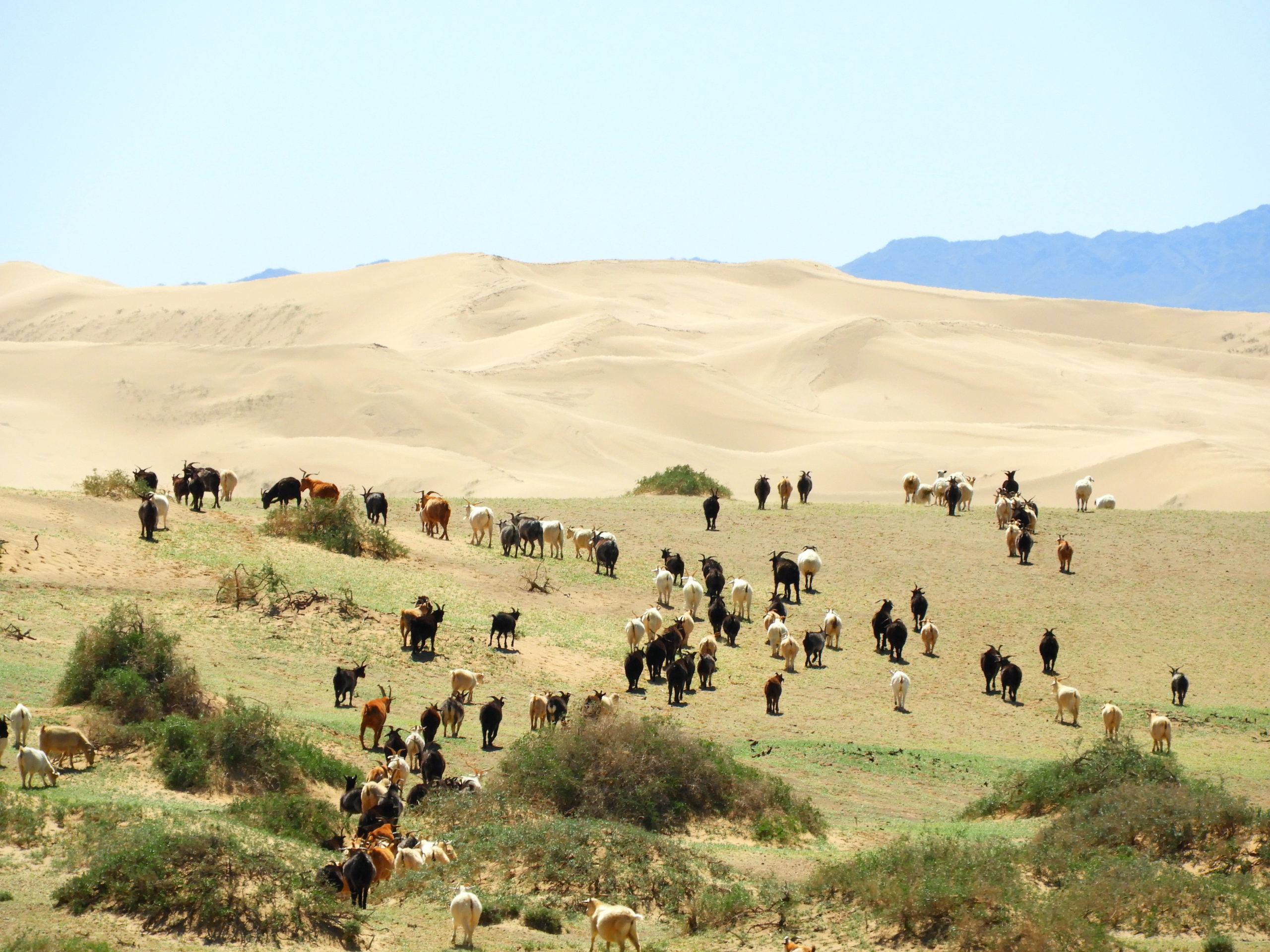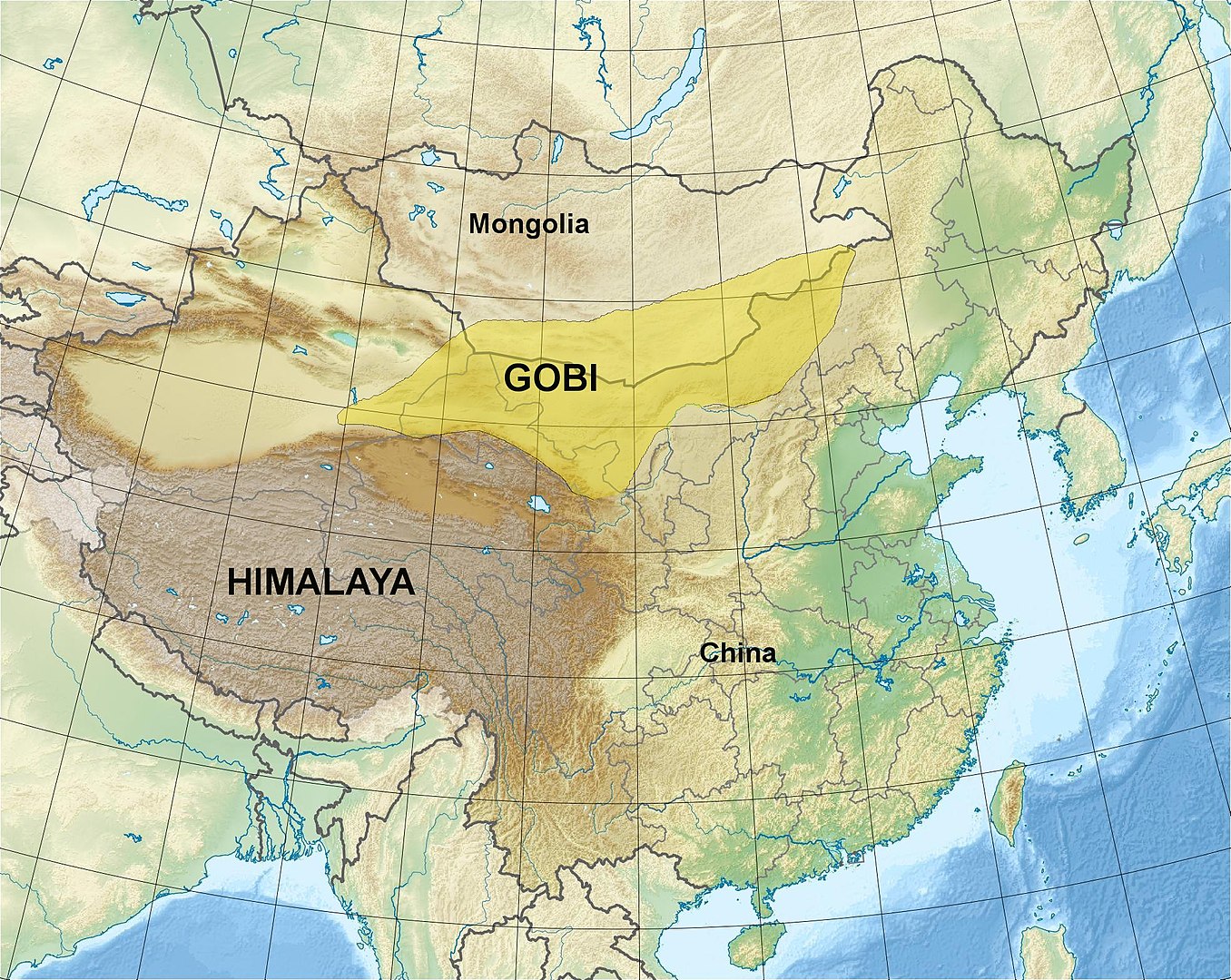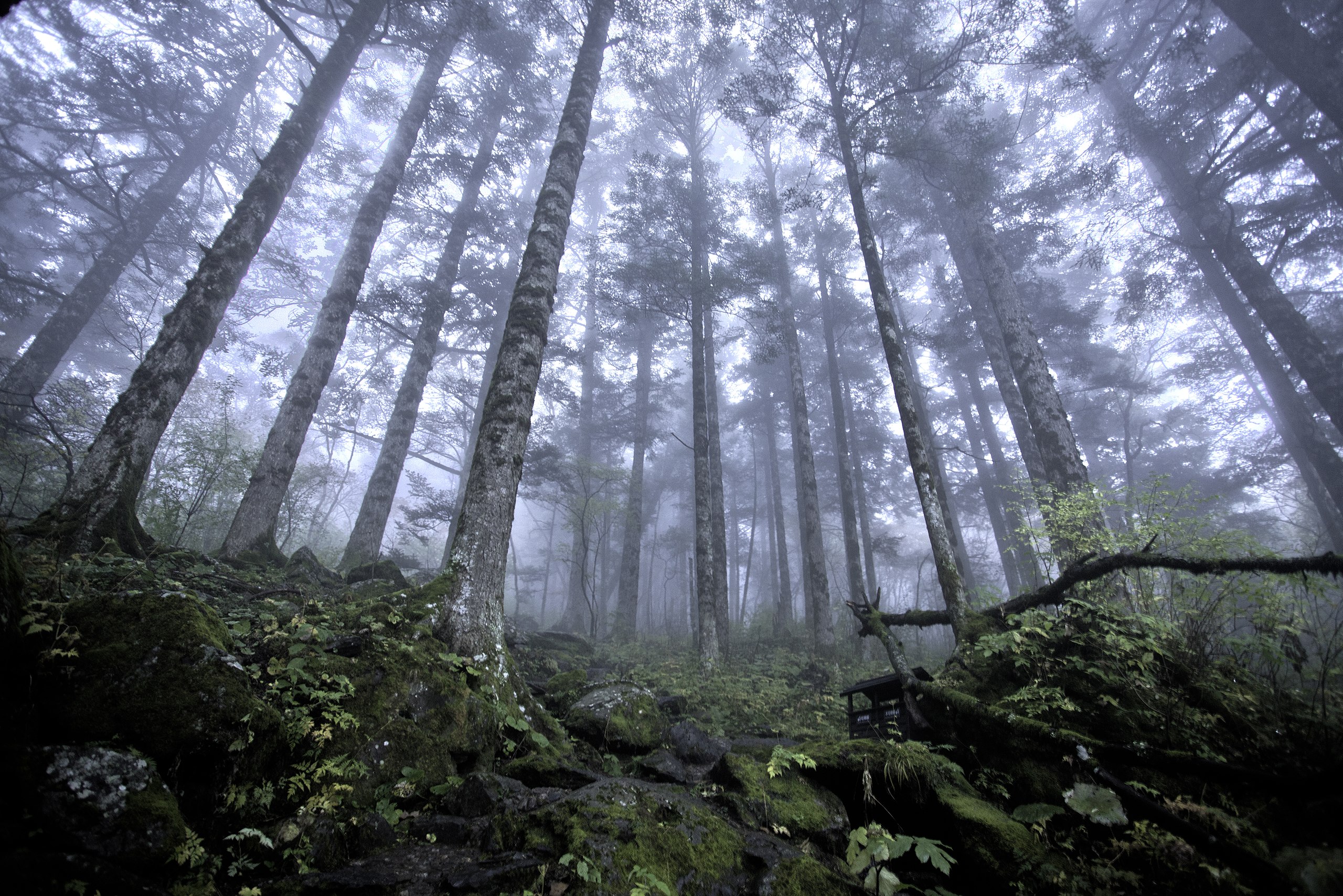How Durable is the Great Green Wall of China?

By Cassidy Warner
Staff Writer
20/4/2022

China’s Great Green Wall is a truly impressive project, a titanic effort to push back against the encroaching Gobi Desert. Officially called the Three-North Shelter Forest (or Shelterbelt) Program (TNSP), this project is pioneering, and, despite some setbacks and failures, has been mostly successful.
Desert expansion, or “desertification,” is the process by which formally fertile land degrades and becomes arid. This is a global problem: a third of the Earth’s land surface is at risk of degradation and estimates of already degraded land range from 25% to 75% with more than 12 million hectares of arable land, or 24 billion tonnes of fertile soil, being lost to desertification each year. Combating desertification isn’t just about saving the environment; it is also about saving lives and livelihoods. Areas directly adjacent to existing deserts are particularly vulnerable, as desert windstorms literally blow soil away and suck moisture out of the land until it too degrades into desert. Famine and drought often follow. Because of this creeping effect, Senegal’s president, Abdoulaye Wade, who is spearheading the fight against desertification in Africa, described the desert as “a spreading cancer” and efforts to hold it back as a “titanic battle.”
Most of the world was late in waking up to this problem. The UN Convention to Combat Desertification was only enacted in 1994, and was ratified by 197 countries over the next five years, 169 of which are impacted by desertification and land degradation. But it wasn’t until 2007 that the African Union announced its own “Green Wall” project to hold back the Sahara Desert – the largest desert in the world. But China had been actively fighting desertification a good two decades before the UNCCD came into force, and three decades before Africa followed its lead.

Desertification in the Gobi Desert in Mongolia, which can be caused by overgrazing
Initiated in 1978, the TNSP is the largest afforestation project in the world, and by the time it is completed in 2050, the Wall will theoretically be 4,800 km long and 1,450 km thick, and will increase the forest cover of the “Three North” region (comprising northwest China, north China, and northeast China) from 5% to 15%. Where the African Union ambitiously planned to build an 8,000 km-long wall from the East coast of Africa in Senegal to the West coast in Djibouti in only 23 years (finishing in 2030), China’s approach has been more realistic – and more successful. Africa’s Wall is stalled at 4% completion despite being more than halfway through its expected build time and has effectively been abandoned due to international infighting, troubles with terrorism, and neglect.

Picture Credit: Christophe cagé
On the other hand, China is actually running ahead of schedule, having already raised forest coverage in the Three North Zone from 5% to 13.57% (of the expected 15%). Where Africa’s Wall has been torn apart by incoherence, China has used its autocracy to great effect; every year on March 12, “Tree Planting Day,” the country hosts a propaganda extravaganza with party members and model workers carrying shovels and planting trees and reminding people to fulfil their legal duty to plant at least 3 saplings every year (this duty applies to everyone over the age of 11). The Chinese State Forestry Administration said that the desert has been shrinking since 1999, and a report submitted to the UN in 2019 states that the TNSP is “basically complete” and estimated that the project will achieve all of its aims by 2030, two decades early.

Tree planted by Xi Jinping in Lianhuashan Park in Shenzhen (Picture Credit: Hosamwimel)
This all sounds a little too good to be true. So is it?
First of all, taking China’s official figures at face value is always problematic. As one former forestry worker put it, “forest coverage is, just like GDP, a measure of government performance,” and everyone tries to inflate their numbers. Consequently, data and measurements get repeatedly massaged, firstly to make individual workers look good, and, secondly, to please the government. In 2011, Yu Changqing, a former consultant to the World Bank and the World Wildlife Fund who used to work in the statistics department for the Chinese Academy of Forestry, spoke about this fudging, saying that government inspectors would cherry-pick inspection times and bend assessment criteria to get the most favorable results. Thus, official Chinese figures include areas of immature and potentially unviable growth, “scrub forest,” and even logged areas that are earmarked for reforestation, but haven’t actually been planted. Thus, the reliability of the TNSP’s statistics is questionable at best.
But even if China’s figures are assumed to be accurate, the impressive numbers kind of miss the point: the TNSP is a textbook example of not seeing the forest for the trees. In other words, by focusing exclusively on planting trees, China has missed other crucial forestry problems and causes of desertification.
For example, by concentrating on keeping out the enemy of the Gobi Desert, the Green Wall misses the creeping land degradation that is caused by overgrazing and deforestation, both problems that come from inside the shelterbelt. It is true that forest cover in the Three North Zone has increased, and impressively at that, but China’s total forest cover has actually declined, resulting in a net decrease of 6.4% between 2001 and 2020. For the period between 1990 and 2010, China was losing forest cover at a rate of 1.58% per year. An oft-quoted statistic is that the completion of the TNSP will result in 42% forest coverage for China’s landmass; but with the TNSP almost complete, China’s current forest coverage is hovering around only 22%. The obvious conclusion is that while China has raised forest coverage in the Three North region, it has lost some 20% of forest coverage elsewhere. Arguably, the new forests are better located in that they also serve to hold back the Gobi Desert, but the net loss is still disturbing.
The Green Wall misses the creeping land degradation that is caused by overgrazing and deforestation, both problems that come from inside the shelterbelt.
But even if they are better located, the new forests are not healthier. There is a vast difference between naturally-occurring old-growth forests and the monoculture plantation forests that comprise over 80% of TNSP forests. The TNSP grows these plantation forests rather than more natural forests because, in addition to beating back desertification, the trees there can be periodically chopped down for timber (before the area is replanted), thus providing economic benefits. The problem with these monoculture forests is that, whilst they grow faster, they don’t create balanced ecosystems (meaning they cannot be self-sufficient), and are more prone to diseases and pests. In one incident in 2000, a single pest infection wiped out a billion planted poplar trees in Ningxia, northwest China. This loss was enough to prompt the World Bank to advise China to focus on “quality rather than quantity,” but the damage has already been done: after decades of deforestation, only 2% of China’s forests remain old-growth. During another incident in 2014, large swathes of the Bashang plains in north China were dying, essentially of neglect, because monoculture forests had been mismanaged and left to survive on their own.

Virgin forest in Shennongjia Forestry District, Hubei (Picture Credit: evilbish)
In the same way that it matters which trees are planted, and where, it also matters how they are planted. Afforestation is not as simple as digging holes, putting seeds in, and then hoping for the best. Large sections of the shelterbelt have been criticized for not considering compatibility issues like water consumption and soil conditions, resulting in sickly, weak trees that die soon after planting. A 2019 article from The Economist claimed that only 15% of the trees planted in the Three North Zone since 1949 have survived. And when the trees do survive, if they are poorly chosen and poorly planted, they end up adversely affecting environmental conditions rather than improving them. Multiple studies have found that afforestation has caused a decline in soil moisture by as much as 32-37%. The resultant lack of water later chokes and kills the natural and woody vegetation, as well as grass cover – both essential components in reclaiming degraded land and combating desertification. One study found that seven years after afforestation occurred, vegetation cover had decreased by as much as 30.5%. Unlike tall, smooth-trunked trees, low-lying vegetation and grass cover creates an essential barrier against wind-swept erosion, as well as sustainably locking moisture into the soil rather than sucking it out for rapid growth. These things mean the difference between a functioning ecosystem and just a copse of trees.
These are all significant problems, but they do not diminish China’s monumental achievement. A pioneering project of this magnitude is bound to have issues. Unlike other countries that modeled their afforestation projects off of the TNSP, China had no examples to follow and had to invent the necessary methodology as the project progressed. The fact remains that even despite these setbacks, China has succeeded in reversing the expansion of the Gobi Desert, has balanced concern for the environment against the economic interests driving deforestation, developed revolutionary afforestation techniques, gotten the Chinese people invested in the success of the project, and has fulfilled an already visionary goal more than 20 years ahead of schedule.
These are all significant problems, but they do not diminish China’s monumental achievement.
The tricky part will be maintaining those achievements through to the 2050 completion date – and beyond. Fortunately, China’s willingness to learn from past mistakes makes that more likely. For example, China’s afforestation techniques have greatly improved over time: after beginning with only a 37% survival rate for planted saplings, the government invested in research and development and raised that figure to 60% in the 1980s, and again to over 85% in the 1990s. An enormous number of trees have been lost to experimentation and poor technique, but less are expected to be lost in future. The Chinese Communist Party has also acknowledged the importance of quality over quantity, with Chinese President Xi Jinping talking about the need for a “holistic approach” to China’s reforestation as recently as 2022’s Tree Planting Day, as well as expanding the list of tree species that Chinese people are legally required to plant.
But just as it takes years for trees to mature, it takes years to accurately measure the success of a forestry project. Results in the short term are often promising, with millions of trees sprouting and looking healthy, but the true viability of the forest won’t be apparent for decades. Right now, the TNSP appears solid, but it is at least partially based on an initially successful reforestation project of the Mu Us Sandland in North China’s Inner Mongolia. However, a 2008 report on the project by Dr Shixiong Cao, a professor at Beijing Forestry University, later discovered that more than 70% of the trees had died within two decades and soil conditions were worse than when the project started.
As it stands, the Great Green Wall is looking a little shaky, but if China uses the next two decades to shore up the weak patches, it should be sound by 2050. Ultimately, China has the tools and the will to ensure that the Great Green Wall will be as durable as its stone one, if the country only applied them slightly differently: the tenacity and single-mindedness that China brought to planting trees could be applied to cultivating other flora like low-lying vegetation and grassland; and investing in agroforestry (integrated agriculture and forestry) could marry the Wall’s economic successes with its ecological ones rather than pitting the two aims against each other, as well as improving the relationship between the Wall and the locals needed to maintain it.
The Great Green Wall is already a big win for China, but it could be even bigger, provided its government can see beyond the indiscriminate planting of trees and focus more on the managing the forest as a whole.
